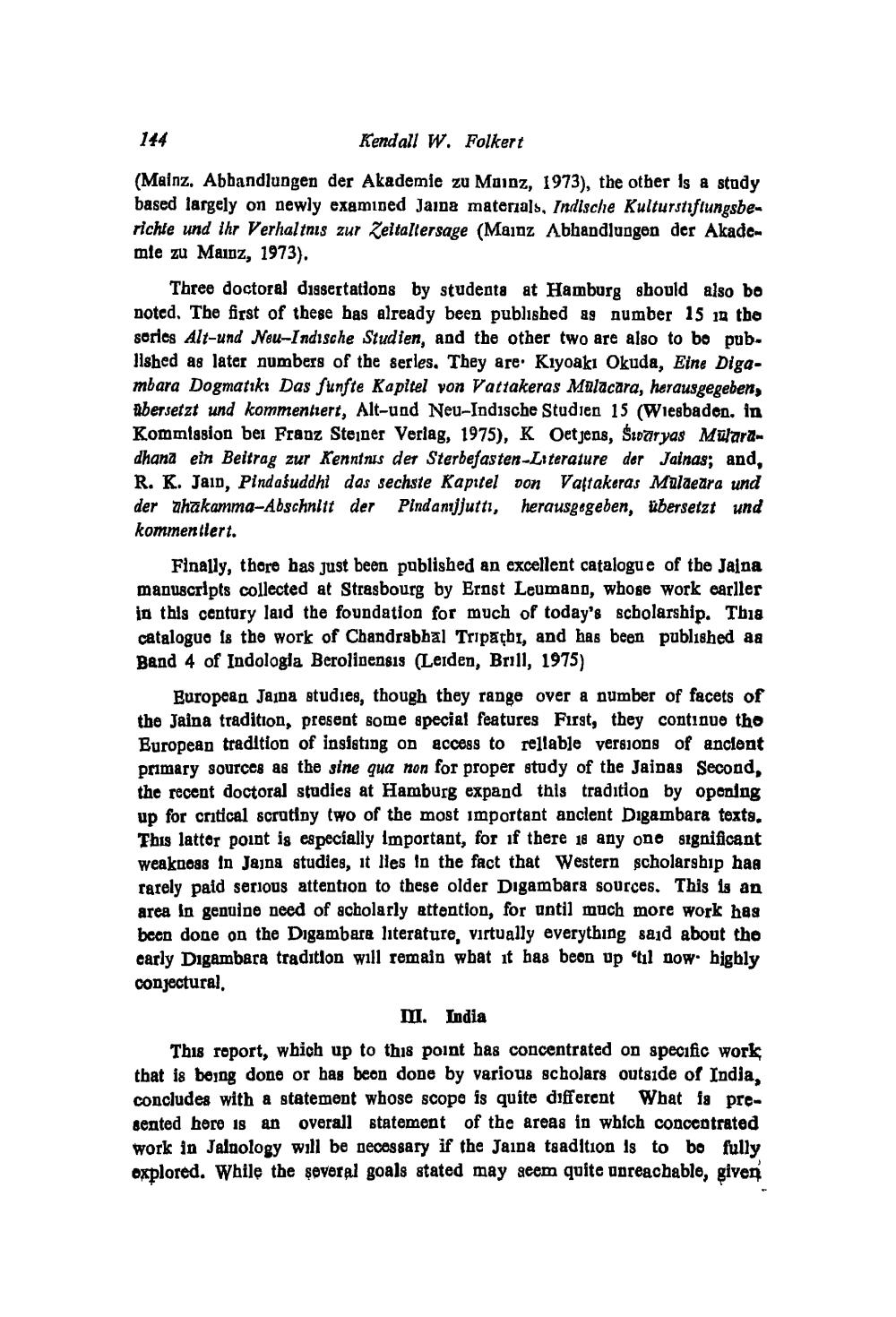________________
144
Kendall W. Folkert
(Mainz, Abhandlungen der Akademie zu Mainz, 1973), the other is a study based largely on newly examined Jaina materials, Indische Kulturstiftungsberichte und ihr Verhaltnis zur Zeitaltersage (Mainz Abhandlungen der Akadem mie zu Mainz, 1973).
Three doctoral dissertations by studenta at Hamburg should also bo noted. The first of these has already been published 19 number 15 12 the sories Alt-und Neu-Indische Studien, and the other two are also to be pub. 11shed as later numbers of the series. They are. Kıyoakı Okuda, Eine Digambara Dogmatik: Das funfte Kapitel von Vattakeras Malacara, herausgegeben, abersetzt und kommentiert, Alt-und Neu-Indische Studien 15 (Wiesbaden, in Kommission bei Franz Steiner Verlag, 1975), K Oetjens, Śwaryas Mülara. dhana ein Beitrag zur Kenntnis der Sterbefasten-Literature der Jainas; and, R. K. Jain, Pindašuddht das sechste Kapitel don Vaftakeras Malaeara und der ahakamma-Abschnitt der Pindanjjuttı, herausgegeben, übersetzt und kommentiert.
Finally, there has just been published an excellent catalogue of the Jalna manuscripts collected at Strasbourg by Ernst Leumann, whose work earller in this century laid the foundation for much of today's scholarship. Tbia catalogue is the work of Chandrabbal Tripathi, and has been published aa Band 4 of Indologia Berolinensis (Leiden, Brill, 1975)
European Jaina studies, though they range over a number of facets of the Jaina tradition, present some special features First, they continue tho European tradition of insisting on access to reliable versions of ancient primary sources as the sine qua non for proper study of the Jainas Second, the recent doctoral studies at Hamburg expand this tradition by opening up for critical scrutiny two of the most important ancient Digambara texts. This lattor point is especially important, for if there is any one significant weakness in Jajna studies, it lles in the fact that Western scholarship haa rarely paid serious attention to these older Digambare sources. This is an area in genuine need of scholarly attention, for until much more work has been done on the Digambara literature, virtually everything said about the early Digambara tradition will remain wbat it has beon up 'til now highly conjectural,
II. India This roport, which up to this point has concentrated on specific work that is being done or has beon done by various scholars outside of India, concludes with a statement whose scope is quite different What is presented here is an overall statement of the areas in wbich concentrated work in Jalnology will be necessary if the Jaina taadition is to be fully explored. While the several goals stated may seem quite upreachable, given




